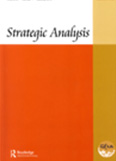Time to Cross the Adam’s Bridge Again
A recent survey by a Colombo-based agency on the peace process revealed that a majority of Sri Lankans prefers India as a peace facilitator rather than the Norwegians. According to the report by the Centre for Policy Alternatives, over 52.5 per cent of Sinhalese and 82 per cent of upcountry Tamils voted for an Indian involvement in the peace process. In recent years, the mood has shifted across Sri Lanka with major parties to the conflict instilling a newfound faith on New Delhi as the ideal arbitrator for the peace process.
- A. Vinod Kumar
- January 18, 2007










